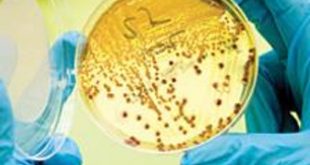Biophotonic sensors and systems are rapidly transforming the way we approach medical diagnostics, disease detection, and biological research. These innovative optical devices offer real-time, non-invasive, and highly sensitive solutions that enable practitioners and researchers to probe biological systems at the cellular and molecular levels. As this technology matures, it holds the potential to revolutionize healthcare, making diagnostics faster, more accurate, and more accessible than ever before.
What Are Biophotonic Sensors?
Biophotonic sensors are optical devices that harness the interaction between light and biological materials to extract critical information from tissues, cells, or fluids. By using specific wavelengths of light—typically from lasers or LEDs—these sensors can measure changes in light absorption, scattering, fluorescence, or refraction to analyze biological samples in a minimally invasive manner.
Key technologies driving this innovation include:
-
Surface Plasmon Resonance (SPR): This technique detects molecular binding events, such as an antibody attaching to a virus, by measuring tiny shifts in reflected light, enabling highly sensitive and label-free biomolecular detection.
-
Raman Spectroscopy: By analyzing the scattering patterns of laser light, Raman spectroscopy identifies the unique chemical fingerprints of molecules, aiding in the detection of cancers, pathogens, and toxins.
-
Optical Coherence Tomography (OCT): Often described as an “optical ultrasound,” OCT creates detailed 3D images of tissue microstructures, making it invaluable for early detection of retinal diseases and other soft tissue conditions.
Unlike traditional lab tests, biophotonic sensors offer the promise of point-of-care diagnostics, enabling rapid results without the need for biopsies, extensive culturing, or expensive imaging infrastructure.
Applications and Breakthroughs in Healthcare
Biophotonic technologies have already begun reshaping various facets of healthcare and biological research. In clinical diagnostics, they are enabling earlier and more accurate detection of diseases such as cancer, cardiovascular conditions, and infectious diseases. For instance, OCT is widely used in ophthalmology to detect glaucoma and macular degeneration, while SPR biosensors are employed in detecting biomarkers for heart disease and cancer.
In drug development, biophotonic sensors help researchers monitor how drugs interact with cells and tissues in real time, accelerating the testing and validation of new therapies. Their high sensitivity also makes them ideal for testing food and water safety, detecting bacterial contamination, or identifying harmful substances.
Importantly, these systems are making diagnostics more accessible in remote and underserved regions. Portable and affordable point-of-care devices based on photonics are increasingly used for rapid disease screening in field settings—an especially critical advantage during outbreaks or in developing countries with limited laboratory access.
Challenges and Future Directions
Despite their promise, biophotonic sensors still face several challenges before they can be fully mainstreamed. One major issue is ensuring sensitivity and specificity across varied biological conditions. Differences in skin color, hydration levels, and other individual traits can impact light-based readings, sometimes leading to inaccuracies.
Another hurdle is scalability. While biophotonic sensors are highly sophisticated, the fabrication of their underlying optical components—often involving nanostructures and precision materials—can be expensive. Developing cost-effective manufacturing techniques without compromising performance is essential for broader adoption, especially in global health applications.
Looking forward, the integration of AI algorithms for image and signal interpretation, combined with advances in lab-on-a-chip platforms and quantum-enhanced sensors, could dramatically increase the accuracy, speed, and usability of biophotonic systems. Researchers are also exploring novel materials like graphene and hybrid organic-inorganic compounds to enhance performance while lowering production costs.
Conclusion: A Brighter Future Through Light
Biophotonic sensors are more than just a technological breakthrough—they represent a paradigm shift in how we understand, detect, and respond to biological changes. By illuminating the previously invisible interactions within our cells and tissues, these systems are empowering a new era of precision medicine, real-time diagnostics, and global health innovation. As research and development continue, biophotonic sensors are poised to become indispensable tools in the medical toolbox of the future.
 International Defense Security & Technology Your trusted Source for News, Research and Analysis
International Defense Security & Technology Your trusted Source for News, Research and Analysis

